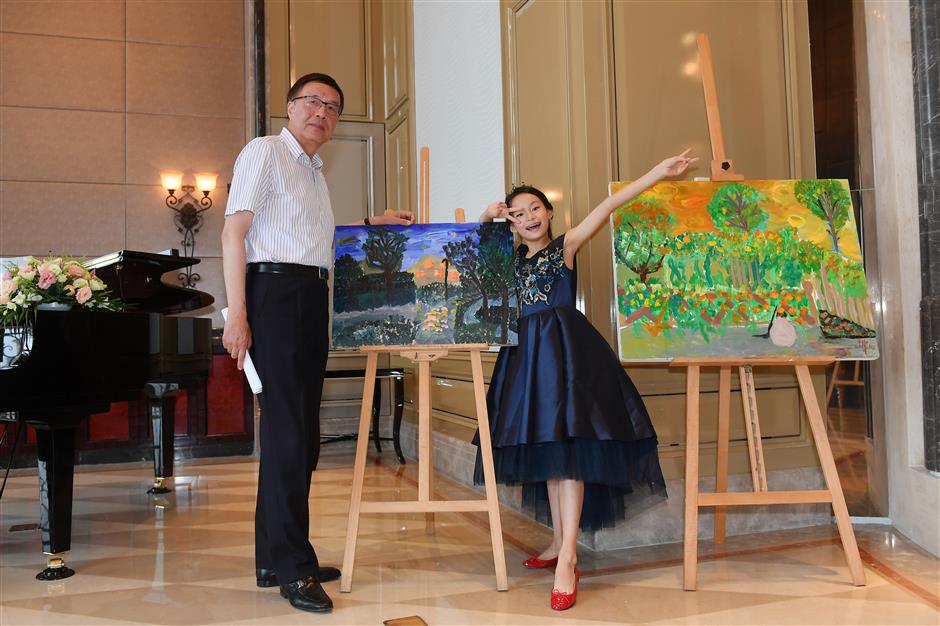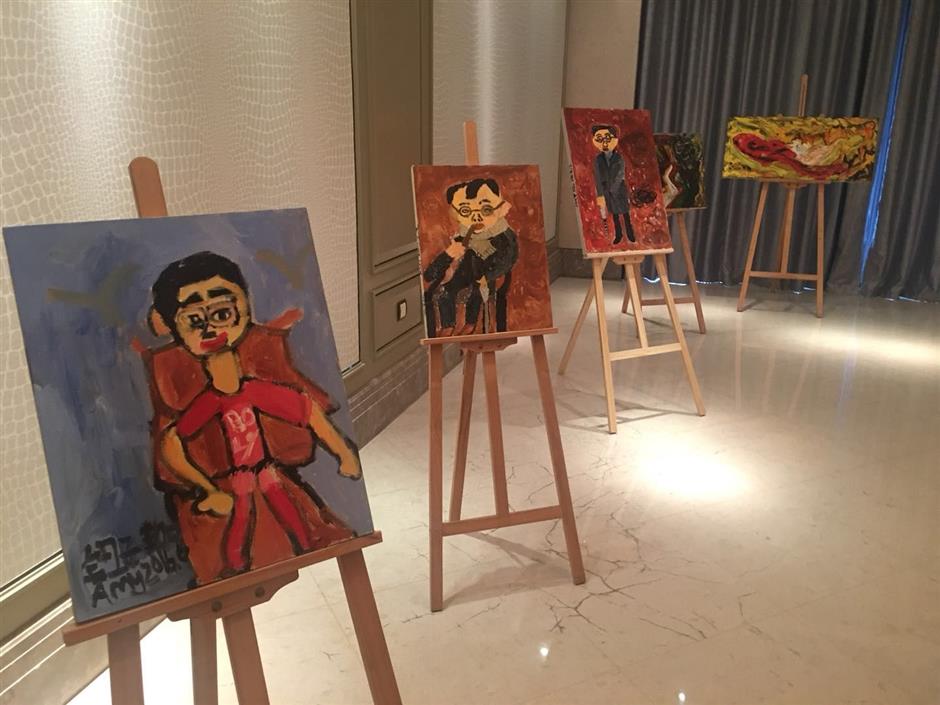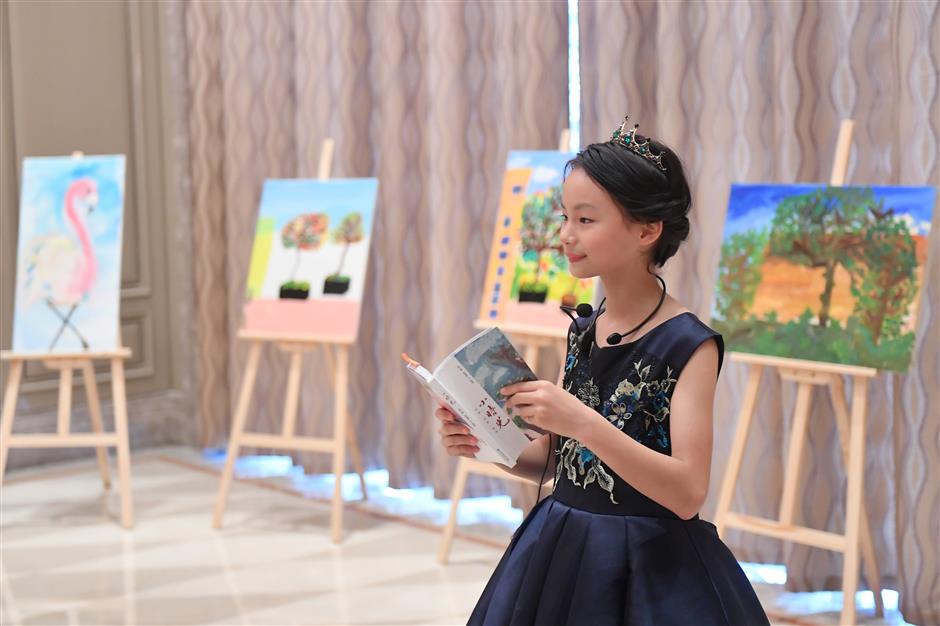Student's art show reflects shifting education landscape
In a luxurious apartment-turned-art gallery in Minhang District, 9-year-old Niu Zijia was excited to greet visitors at her first exhibition.
The idea of an art show for a third-grader might have seemed absurd in the past, yet it reflects a shifting educational landscape in China, particularly embodied in the Shanghai Starriver Bilingual School.
In Chinese education, art has long been seen as secondary to academic scores. Yet times are changing.
Tang Shengchang, the school’s superintendent, stresses the importance of artistic pursuit in a well-rounded education.
“Education is not merely a matter of academic study, but should aim at children’s all-round development, including morality, intelligence, physique and aesthetics,”

Tang Shengchang, superintendent of the Shanghai Starriver Bilingual School, with 9-year-old Niu Zijia at the opening of her exhibition.
Niu, for example, has been painting for about three years, and all the works on display were created in the past two years.
Most of the paintings are about the community where she lives, such as a tree seen through a window or a courtyard corner. There are also three portraits of her father Niu Yefang, who is also a painter.
“Many parents let their children learn arts as technical skills, but actually arts arekid, most notably, a platform for human connection, whether that is peer-to-peer or child-to-parent, and a language that stimulates conversation between people, like any other language,” Tang says. “The highly personal quality of art and how it expresses the artist’s emotions are more valuable than acquiring technical skills.”
Starriver Bilingual School tries to incorporate its emphasis on art, in all its forms, into the school culture as much as possible.
Niu’s exhibition was not a one-off. Students are encouraged to plan out their own exhibitions anytime with the full support of the school.
It encourages small groups of musicians or artists to create posters for their events and to hang them around the campus. There are fairly regular events that aim to celebrate the school’s artists, whether individually or in groups.
“With such events, we hope to turn arts back to their nature as they are for children to express themselves and communicate with others, rather than to compete with skills,” Tang says.

Some of Niu's paintings
He believes arts and these opportunities to display one’s work play a major role in building children’s confidence and sense of self. He emphasizes that the value in arts lies not in making students the “super kids” of today with endless extracurricular activities and commitments to juggle. Instead, he advocates arts as a creative outlet and platform for self-expression.
“Actually, I don’t like to use the term ‘super kid’ because being a high-achieving student doesn’t necessarily correlate to contributing positively to humanity as an adult,” he says.
His approach seems to be working, as all the second graduating class at Starriver have had offers from universities ranked among top 60 around the world.
College results aside, the confidence and excitement Niu exuded as she explained the inspiration behind each of her art pieces was clear.
Besides painting, she also likes writing poems, in English. A book with her poems and paintings will soon be published.
“I love painting because there is no true or false in it like doing math problems and I like to express my feelings freely with my brush,” she writes in the book. “I have painted in rain, in wind and in the sun, and I will go all over the world and paint.”

Niu Zijia reads poems from her recently published book.















